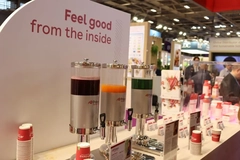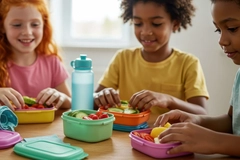Chr. Hansen To Take Probiotics into Juice

The key to the development of the second generation probiotic products is a special Direct, Liquid Inoculation system. It allows food producers to add the probiotic bacteria directly to the finished food product.
22/09/05 Fresh, chilled beverages, such as orange juice, are very likely candidates to be frontrunners in the next probiotic market development, as Chr. Hansen takes its BB12 probiotic further. The new way to use probiotics has been developed by Chr. Hansen and Tetra Pak in close cooperation. It utilizes the aseptic dosing system Flex Dos from Tetra Pak.
The key to the development of the second generation probiotic products is a special Direct, Liquid Inoculation system. It allows food producers to add the probiotic bacteria directly to the finished food product.
In a standard production run, the heat treatment of the beverage would kill the live, probiotic bacteria. With Chr. Hansen’s new Direct, Liquid Inoculation solution the healthy bacteria can be added to the milk or juice in a closed and perfectly clean system. This will make it possible for producers to make safe probiotic beverages in a flexible manner and using their existing equipment.
“The door is now open to a whole new range of possibilities for food producers around the world. I find it very realistic that we will see the first probiotic fruit juices and drinking milks on breakfast tables before the end of 2005,” says Mr. Hans Christian Bejder, Marketing Manager for Probiotics from Chr. Hansen. Bejder would not be more specific than telling FoodIngredientsFirst that the first product introductions would more than likely come in Northern Europe, as no contracts have been signed with food product manufacturers as yet. Industrial trials have been carried out on orange juice first because it is the biggest market from this respect. Juice products would be limited to those with a 1 month maximum shelf life, however. “If it is much longer the probiotics are no longer alive. The packaging is also crucial here,” Bejder explained. The company is however looking at ways to extend the shelf-life by improving the stability. “A good next target would be three months,” he said.
Bejder would not specify what type of health claims would be made on upcoming products, but he suggested that companies work off the success of yoghurt drinks. Claims such as, “you can still get your probiotics from a juice rather than from a yoghurt are probably good approaches”, he said.
Other alternatives utilising this closed system include all types of semi liquid foods such as fresh cheese cottage cheese, while it can be applied in ice cream and smoothie type products.
www.chr-hansen.com












